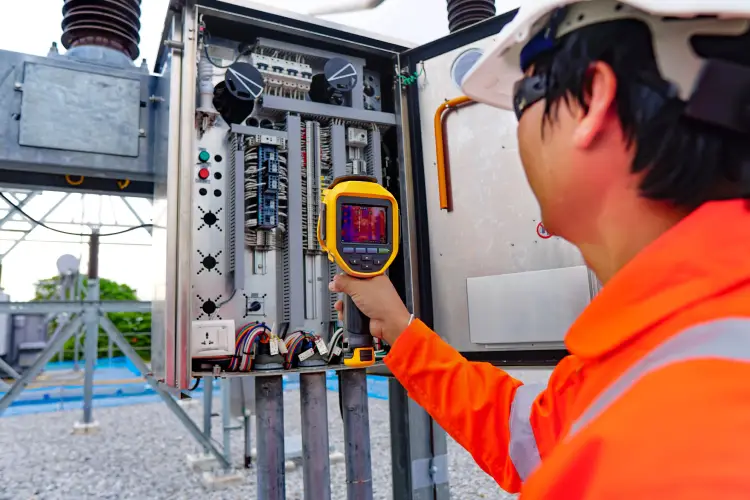
As the volume of data generated by businesses and consumers around the world increases, the enormous carbon footprint of cloud data centres, where much of this information is hosted and processed, is coming into sharper focus. Edge computing, where data is stored and analysed at the same location that it is generated, could be a more sustainable option, but it has its own problems to overcome.

Tech’s biggest names are grappling with the challenge of creating a greener future for computing, and last week Amazon CTO Dr Werner Vogels suggested creating a simpler internet, less reliant on rich, energy-intensive content, may be a possible solution to help cut emissions. “As humans, we’re addicted almost to high imagery, to beautiful experiences, however we also need to realise that that comes at a cost,” Vogels said in an interview with Sky News. “If you were willing to have a latency of 1.7 seconds for your web pages, versus 1.2 seconds, how much capacity could you save? And how much more greener would you be?”
But many businesses are striving for lower latency, enabled by the emergence of 5G networks, to allow them to deliver compelling user experiences, meaning Vogel’s vision for a pared-back internet seems a distant prospect. Edge computing is touted as a solution, delivering the benefits of the cloud and low latency but with a reduced carbon footprint.
Is edge computing good for the planet?
The carbon footprint of tech infrastructure now exceeds that of pre-Covid air travel, according to a report released earlier this year by French think tank The Shift Project, which says emissions generated by tech are growing at 6% a year.
Data centres, particularly the large ones used by public cloud providers such as Amazon’s AWS, Microsoft Azure and Google, are big contributors to this, both in terms of the power they use and the heat generated by their cooling systems. As reported by Tech Monitor, cloud providers are trying to mitigate this in various ways, using more renewable energy, building their own environmentally friendly power plants and, most commonly, offsetting their emissions by purchasing renewables.
From an energy perspective, the bandwidth used pushing data to the cloud comes with its own CO2 intensity.
Louis Brassington, Cleantech Group
“From an energy perspective, the bandwidth used pushing data to the cloud comes with its own CO2 intensity,” says Louis Brassington, lead energy analyst at consultancy company the Cleantech Group. “Doing batch processing at the edge, using a small embedded chip to do a certain list of jobs that it is well defined for, is going to be much more optimised than a general cloud platform which is responsible for processing multiple jobs, applications and services and is using gigawatts of power. So from that perspective edge is more efficient.”
Cloud vs edge in sustainability: more devices, more heat?
But while the power requirements of edge may be lower, it is not without its drawbacks. Research from Transforma Insights suggests the number of edge devices deployed around the world will increase from 2.7 billion to 7.8 billion over the next decade. The wider category of Internet of Things (IoT) connected devices, which includes consumer devices deployed at the edge, is likely to be more than 30 billion globally by 2025.
These devices are adding to the problem of e-waste, says Dr Michael Stead, a lecturer in sustainable design futures at Lancaster University, who has been researching sustainable designs for IoT and edge networks. “IoT has created a double blow when it comes to e-waste,” he says. “We build these electronic devices that, before IoT, were getting turned into e-waste anyway through lack of recycling, reparability and maintenance.” Connecting what might have previously been ‘dumb’ devices has increased the chances of them being thrown away, says Dr Stead, because as they get older their hardware becomes become incompatible with the latest advances in computation, such as software updates.
Global e-waste totalled 53.6 mega-tonnes in 2019, and its set to grow to 74.7 mega-tonnes by 2030. IoT and edge devices have a particular problem with batteries, as many of those used in industry are located in the field and rely on battery power to operate. The European Union’s EnABLEs project, which is campaigning to ensure batteries outlast the devices they power, says 78 million IoT device batteries will be discarded daily by 2025.
Even when plugged into the grid, energy challenges remain for edge networks, argues Brassington. "Edge is enabling a lot more processing to happen," he says. "So this increased penetration of IoT and edge devices within the energy network is, without doubt, going to increase demand."
Tilly Gilbert, principal consultant and edge computing practice lead at STL Partners, says the distributed nature of edge computing, where the smaller edge data centres are required to locally process information collected by devices, presents a challenge as well as a benefit.
"The sustainability challenges of edge computing mainly stem from the lack of economies of scale," Gilbert says. "In large centralised data centres, you can install highly efficient, AI-enabled HVAC (heating, ventilation and air conditioning) systems to handle the power and cooling of the servers. However, once you have many more distributed sites this becomes a more difficult expense to justify. This is particularly true when buildings haven’t been designed and built specifically to be data centres but are instead refurbished buildings like old central offices which telecoms operators have."
Gilbert adds that the cloud retains efficiency advantages in some important areas. "I think there are some circumstances in which running workloads in the cloud will be more efficient; for example, the centralised cloud providers have tools and programmes to allow for the scaled training of AI algorithms which would be done much less efficiently at the edge," she says.
Will sustainability give edge the edge?
Edge computing is increasingly popular with tech leaders, with 72% of the 2,400 global IT decision-makers polled by HPC Aruba last year in its At the Edge of change report stating that they were using or experimenting with edge technologies in their organisation. However, significant barriers around cost and security remain, which are preventing businesses from using edge devices or increasing their deployments.
Gilbert believes cost remains the overriding factor preventing more companies from deploying at the edge. "The affordability of edge computing is still a big question mark," she says. "It is not clear how much of a premium there will be for workloads running at the edge or how exactly people will be charged."
Because of this, Gilbert argues, businesses are unlikely to be swayed to move workloads out of the cloud on sustainability grounds. "It is likely that only use cases that will really benefit from the other capabilities of edge computing – low latency, data sovereignty, high bandwidth – will justify the expense," she adds. "I think it’s unlikely that potentially being a more sustainable option on its own will motivate enterprises to invest."
Brassington adds that emerging technology has the potential to solve edge computing's power conundrum, potentially adding to the sustainability benefits it can deliver. "A lot of companies are developing self-powered IoT systems which use energy harvesting," he says. "They can use things like thermo-inductive heat recovery systems to harness the heat generated in industrial settings and use it for energy generation."
Many of these systems are coming to maturity, Brassington says, making them a cost-effective option for businesses looking to collect data and do processing at the edge. "I expect thermo-electric systems to become more prevalent, particularly in the energy sector," he says. "For small, targeted workloads, things like neural networks and batch processing, they are becoming a viable option. In a way, it could be a game-changer (for edge computing) because you no longer have to worry about how many devices you're deploying and what the energy consumption is versus relying on cloud infrastructure."
He adds: "The issue at the moment is still the return on investment; the cost versus return isn't there yet. But we're definitely getting there, and as an end game it would be fantastic."






